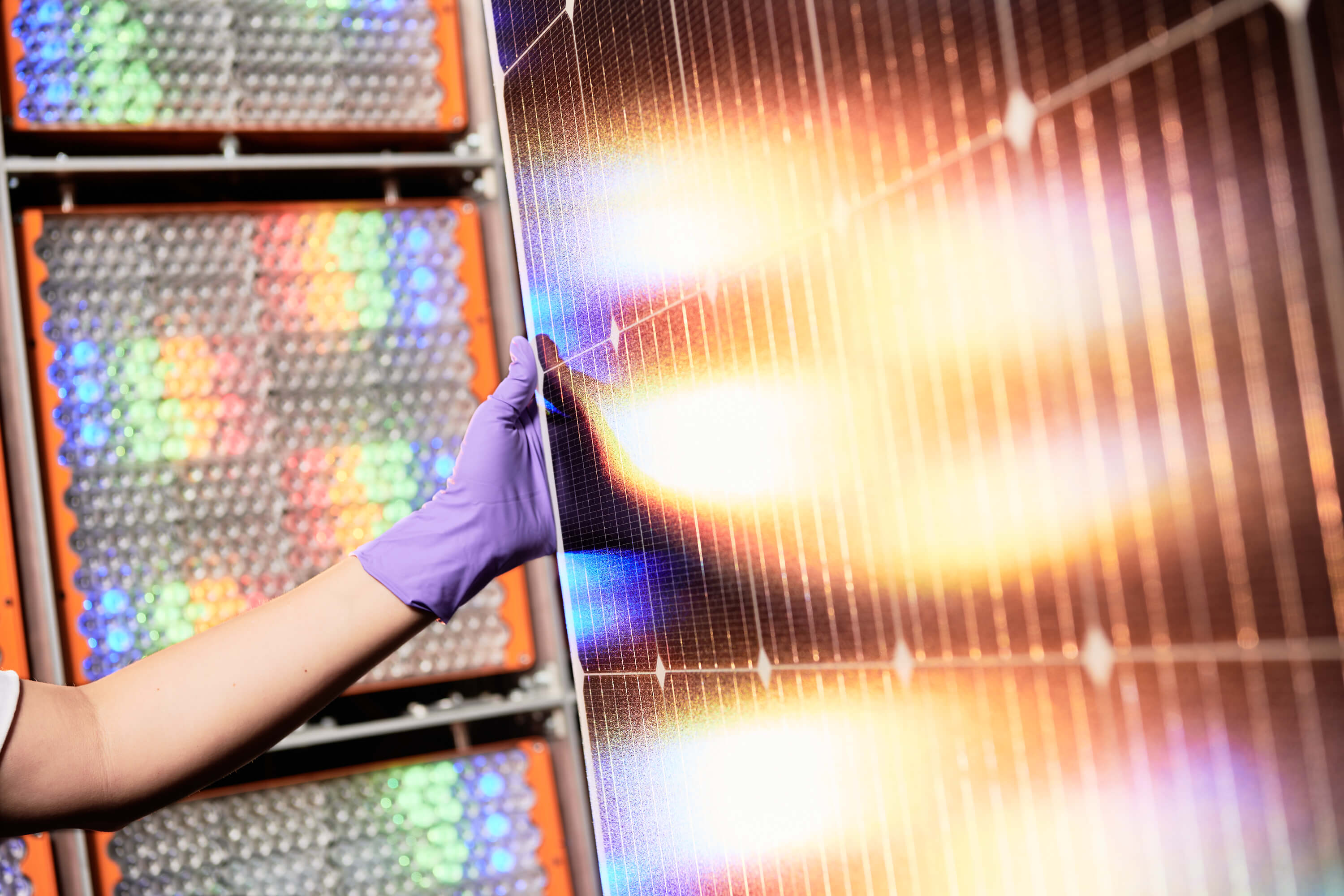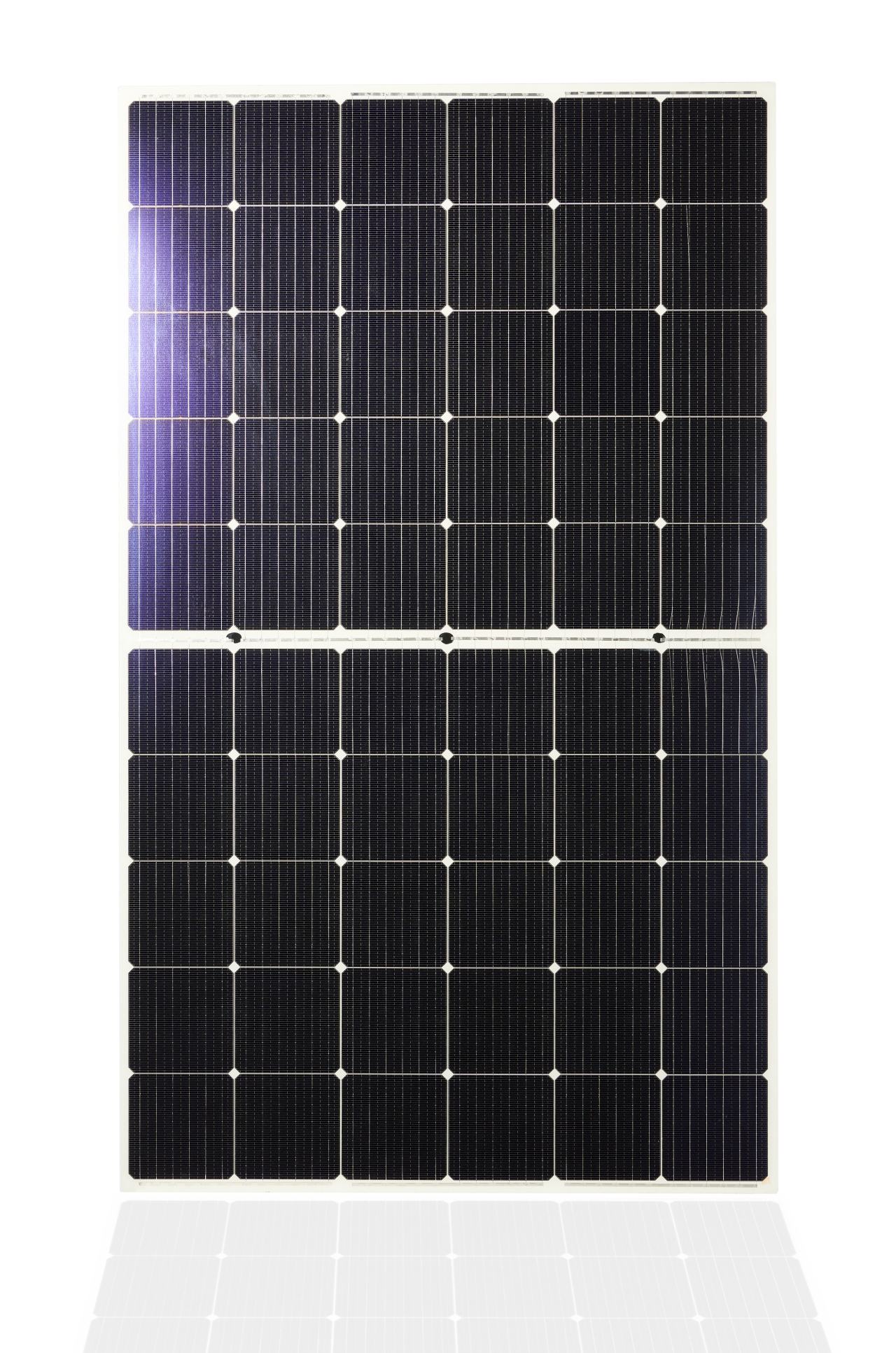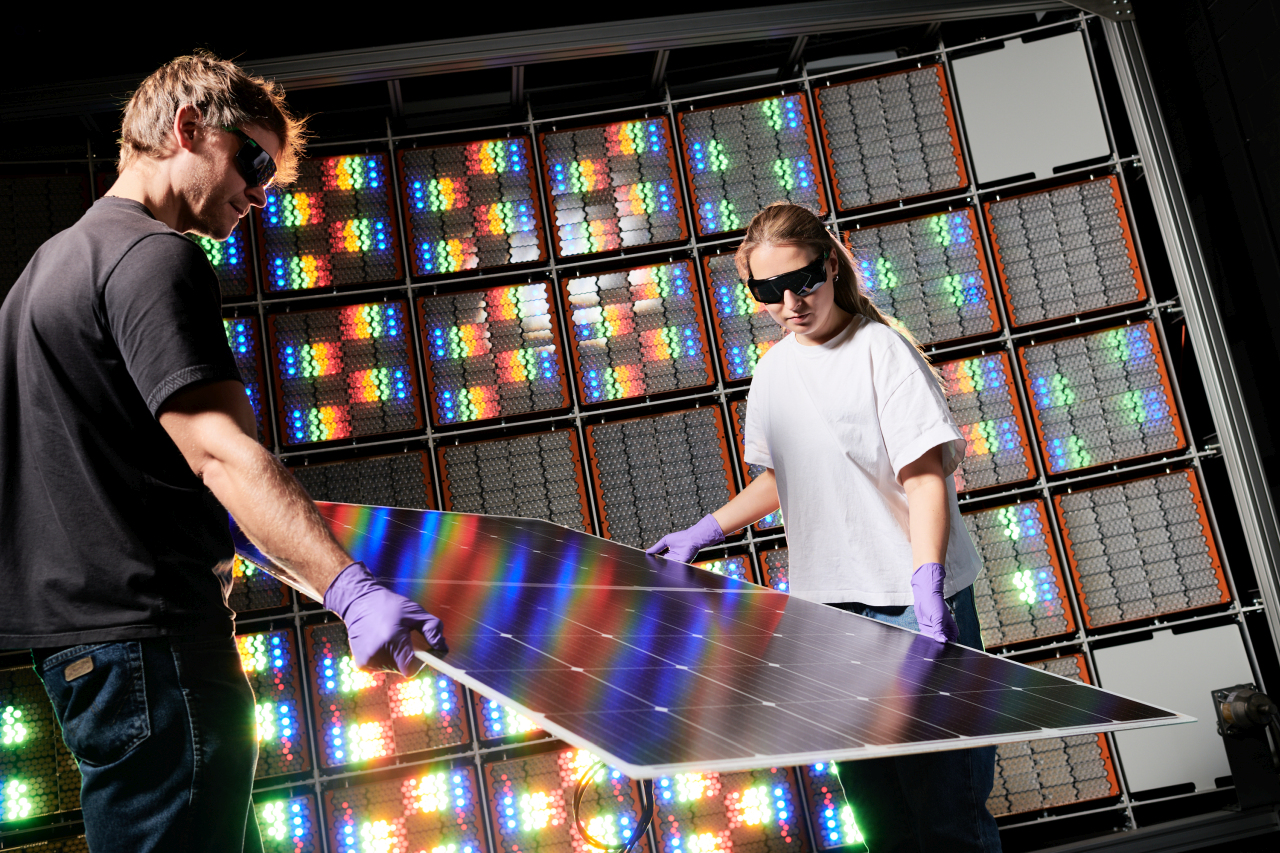Press Release #04
Oxford PV and Fraunhofer ISE Develop Full-sized Tandem PV Module with Record Efficiency of 25 Percent
Photovoltaic (PV) modules based on perovskite silicon tandem solar cells have the potential to achieve significantly higher efficiencies than today's standard silicon PV modules. A research team from the Fraunhofer Institute for Solar Energy Systems ISE has now produced a PV module using perovskite silicon tandem solar cells from Oxford PV. With an efficiency of 25 percent and an output of 421 watts on an area of 1.68 square meters, it is the world's most efficient silicon perovskite tandem solar module in industrial format. For the manufacturing process, the researchers used equipment at Fraunhofer ISE's Module-TEC that is already used in mass production and optimized the processes for the tandem technology.

Oxford PV, a spin-out of Oxford University, is producing the perovskite-silicon solar cells in M6 format with an efficiency of 26.8 percent in small series at its factory in Brandenburg, Germany. Commercial production of the tandem solar cells will begin this year. " This new world record is a crucial milestone for Oxford PV, proving that our tandem solar cells can deliver record-breaking performance when assembled into solar panels," says David Ward, Chief Executive Officer, Oxford PV. Perovskite silicon tandem cells have a theoretical maximum efficiency of over 43 percent compared to less than 30 percent for silicon solar cells.
Using the Oxford PV perovskite-silicon tandem solar cells, a research team at Fraunhofer ISE has now successfully manufactured a glass-glass tandem PV module with 25 percent efficiency (related to designated illuminated area). "This makes it more efficient than any silicon PV module ever built in industrial format," says Prof. Dr. Stefan Glunz, Head of Photovoltaics at Fraunhofer ISE. "The fact that mass production-compatible technology was used for its manufacture demonstrates the enormous potential of tandem technology for the PV industry."
As the perovskite layer of the tandem cells is temperature-sensitive, the research team developed low-temperature processes for the interconnection and encapsulation of the solar cells that are also particularly gentle on the cells mechanically. "These are suitable for industrial mass production and can be implemented on commercial systems. The necessary adaptions can also easily be implemented in today’s PV production lines," explains Dr. Achim Kraft, Group Leader for Interconnection Technology at Fraunhofer ISE. The solar cells were interconnected using conductive bonding "This type of interconnection is used on an industrial scale at Fraunhofer ISE's Module-TEC. In future we will also be testing another alternative: soldering the solar cells at low temperatures," says Dr. Achim Kraft.
For the calibration measurements, CalLab PV Modules used a new multispectral solar simulator to determine the module efficiency. In order to make precise and reproducible statements about the tandem module’s power, both the perovskite and the silicon cell layers must be illuminated by different LED light sources under conditions that are as close as possible to those in which they produce electricity under natural sunlight. The efficiency was calculated using the designated area (da) of 1.68 square meters. As the currently standardized measurement methods are not fully transferable to this new technology, the method used was additionally validated with field measurements.
The project teams from Fraunhofer ISE and Oxford PV are now working towards certification of the PV module. To this end, intensive tests on long-term stability are already underway in the climate chambers of the TestLab PV Module at Fraunhofer ISE.
Downloads and Links
Last modified:


